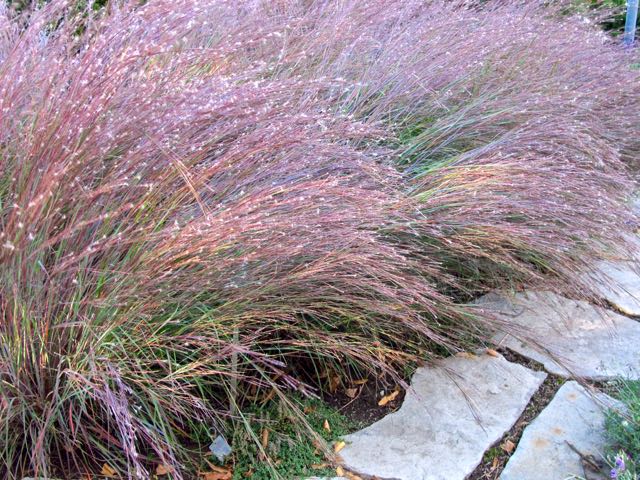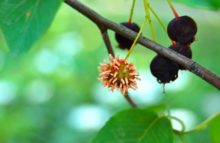Sometimes you can know of a plant without really knowing it. You hear the name often, but wouldn’t be able to pick out the face in the crowd – or in the garden. That’s how it used to be for me with the native grass called little bluest
em (Schizachyrium scoparium).
Then I saw this disp
lay garden in the Montreal Botanical Garden above, poked around eagerly to find the label and, when I found it, said, Wow. Wow. That’s little bluestem? Wow is right.

Approaching dusk, the light brought out the warm tones of this luscious grass and added sparks to the seed heads. I’ve since read t
hat little bluestem rarely flops. But in this garden it was a tidal wave of soft furriness edging the paving stone path. Just lovely. (“Lovely” is one of my most overworked adjectives. But that’s what it was.)
I’ll have to pay attention to the patch below, to see how it looks in other seasons. In fall, well, it’s lovely, just as I said.

This native North American grass is more than beautiful, it’s cold and drought tolerant and wildlife friendly, as this writeup from the Lady Bird Johnson Wildflower Centre explains. It’ll even take a little shade. Most sources suggest it looks best massed, and a look at these pictures would tell
you that’s true.
The Canadian mail order company perhaps not coincidentally nam
ed Bl
uestem has this to say about it. (I’ve never ordered from Bluestem, but they do have great info on their specialty, grasses.) And if you’re feeling DIYish, our friends at Wildflower Farm also sell seed, calling it their most popular ornamental grass.
So, pleased to make your acquaintance, little bluestem. I’ll know you from now on – and very likely love you, too.





2 comments
Wow – is that ever pretty. I’m always amazed at those that are able to easily identify plants, but identifying grasses seems particularly tricky. The 3rd picture looks quite a bit different than the others. How did you identify it as bluestem?
Margaret, the example in the third picture just isn’t as floppy as the one at the Montreal Botanical Garden. If you were to stand beside each and touch them (both have very heavy, densely seeded, almost foxtailish seed heads compared to some other grasses, with white “sparkles” at intervals) you’d soon know they were the same species, even if not the same cultivar or variety. You should be able to detect the “sparkles” (not the technical term, I’m sure) in the 2nd and 3rd pictures above.